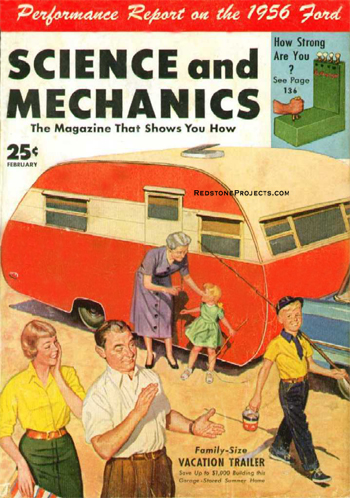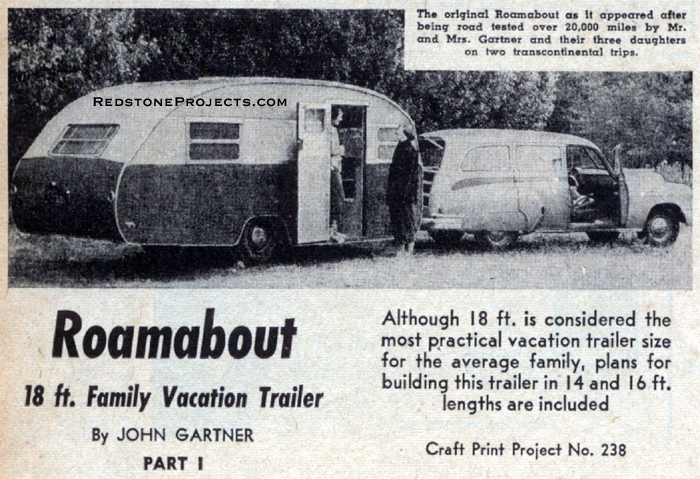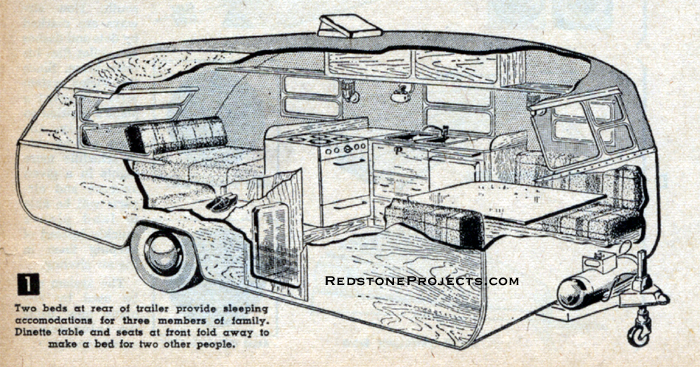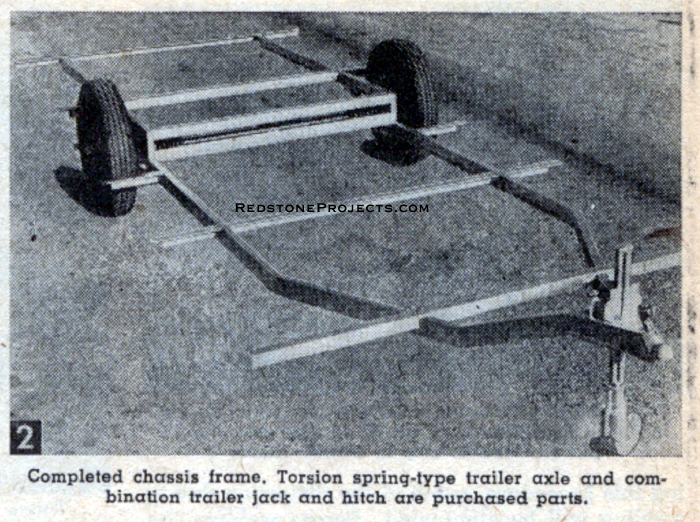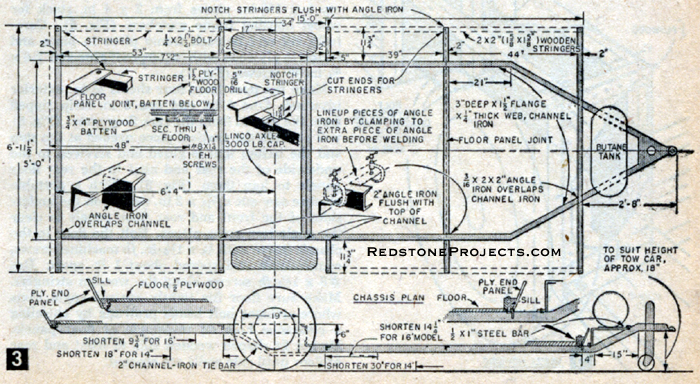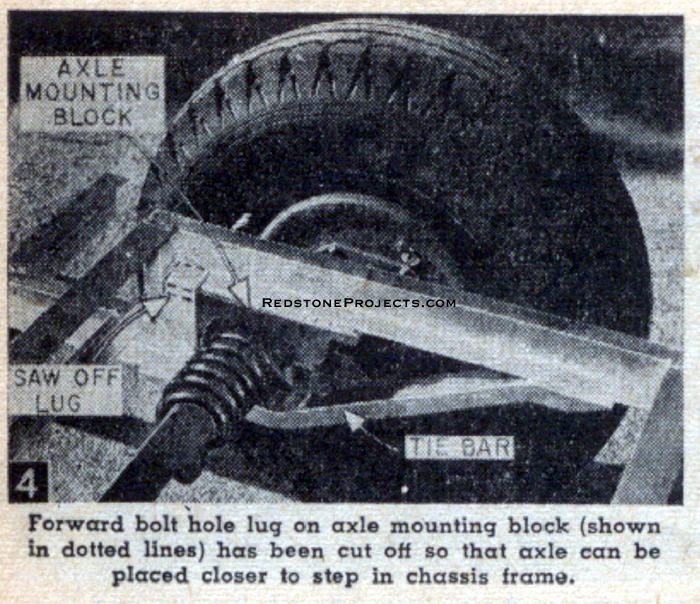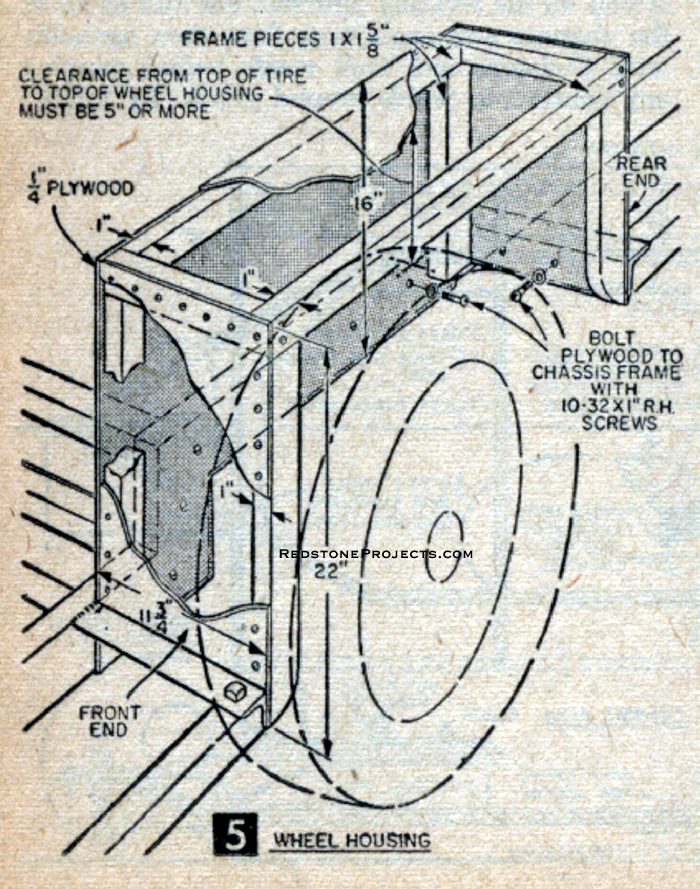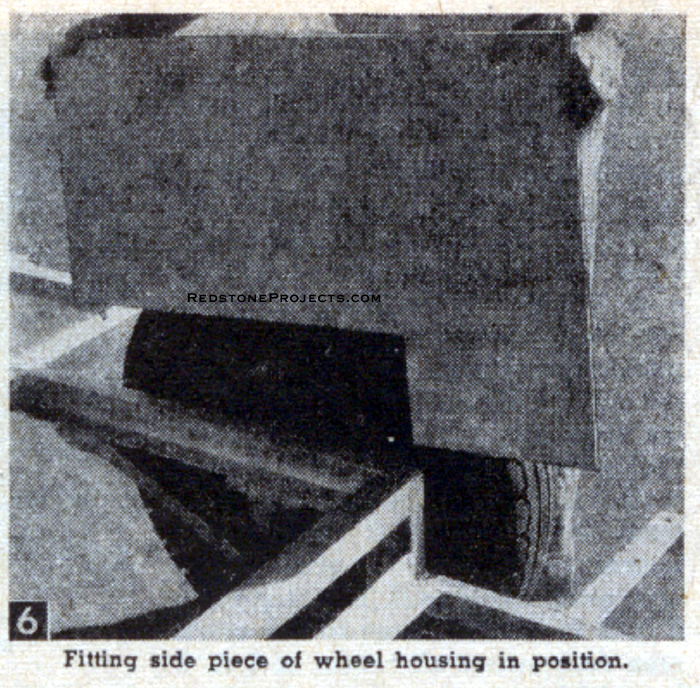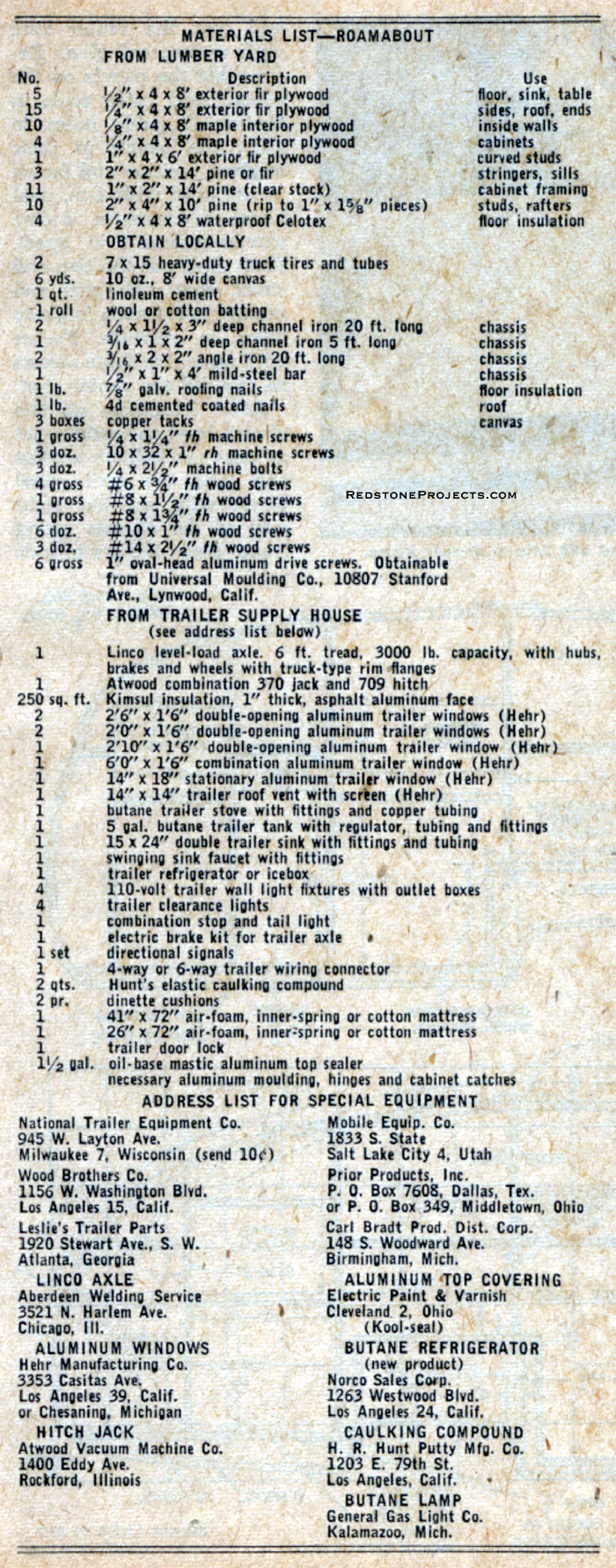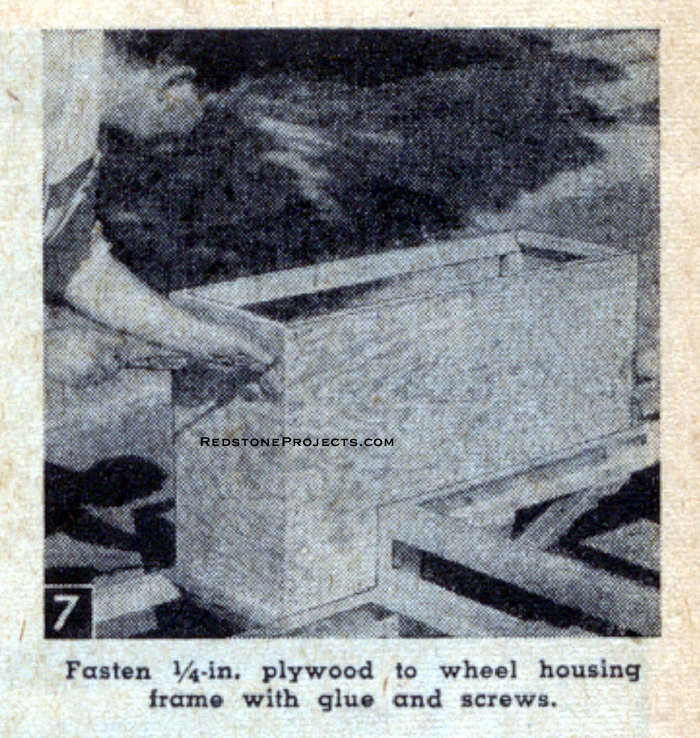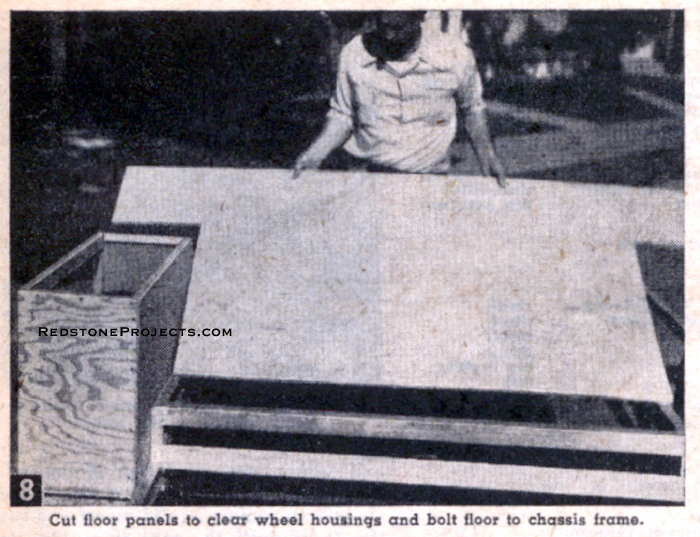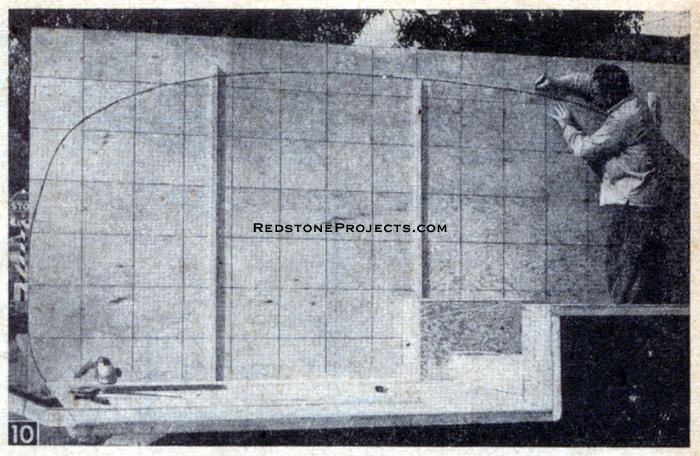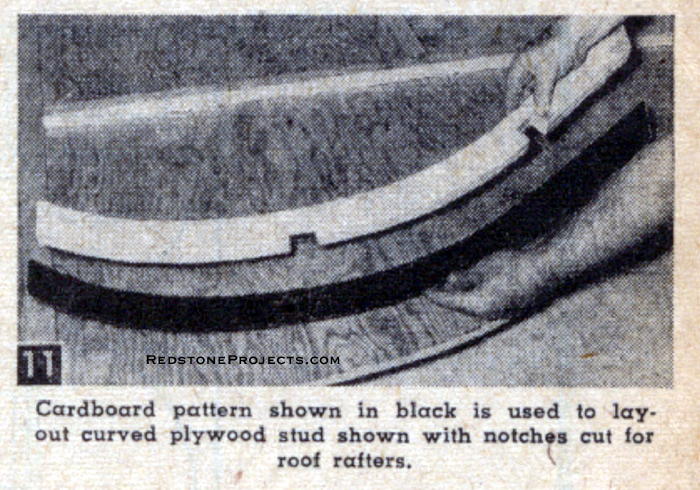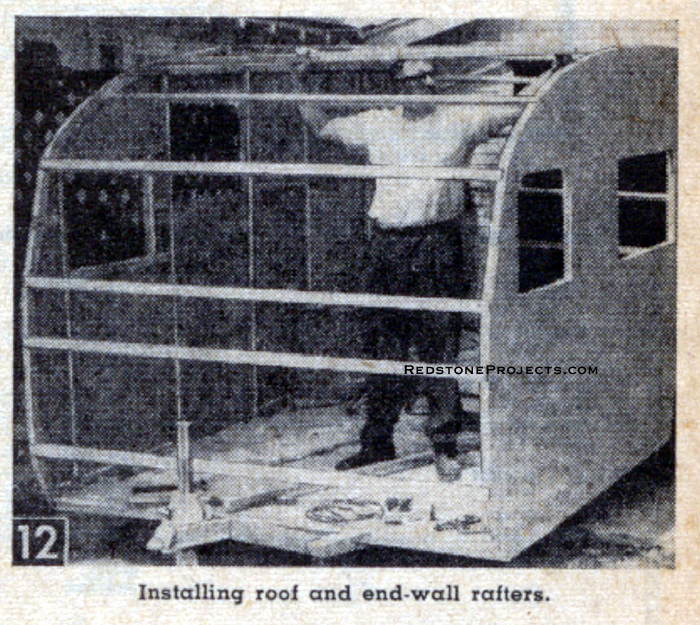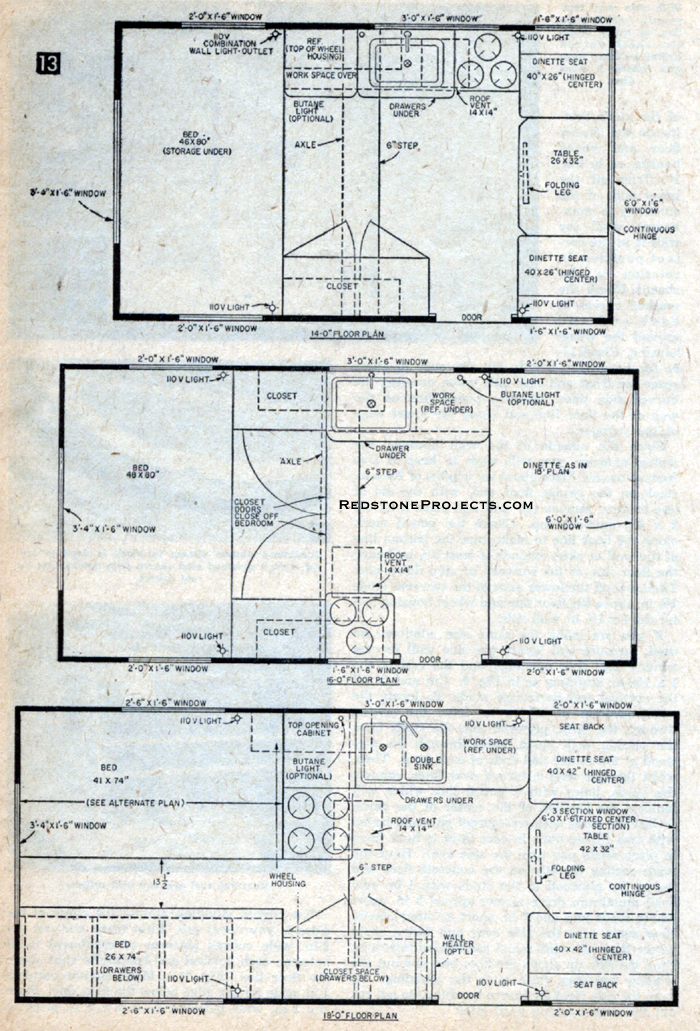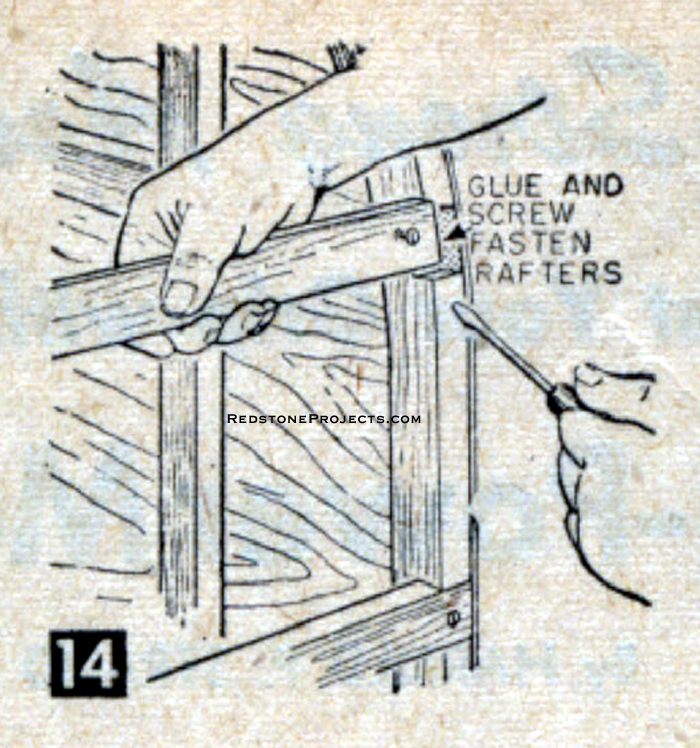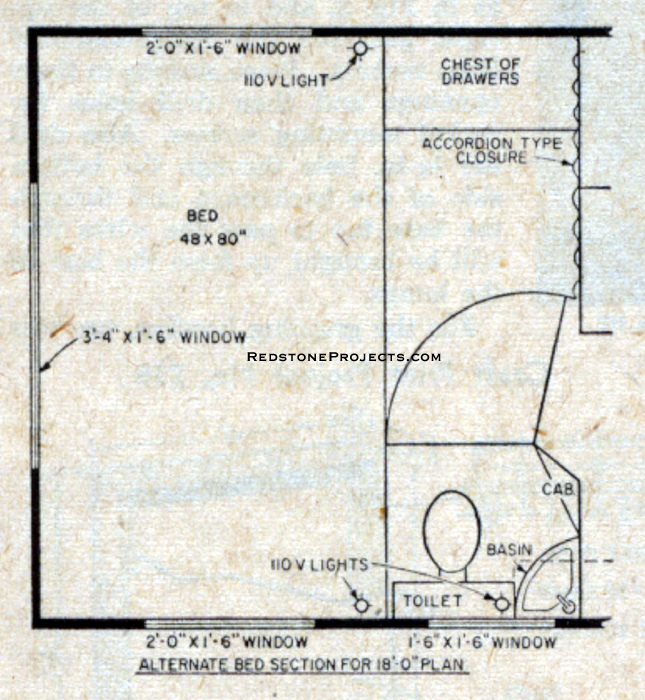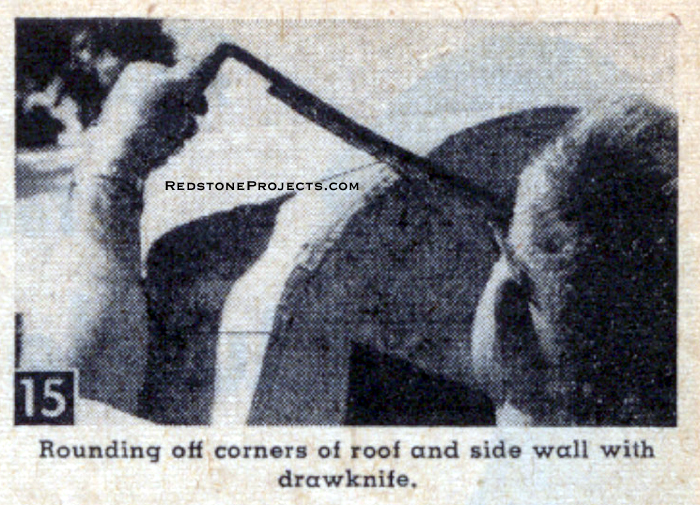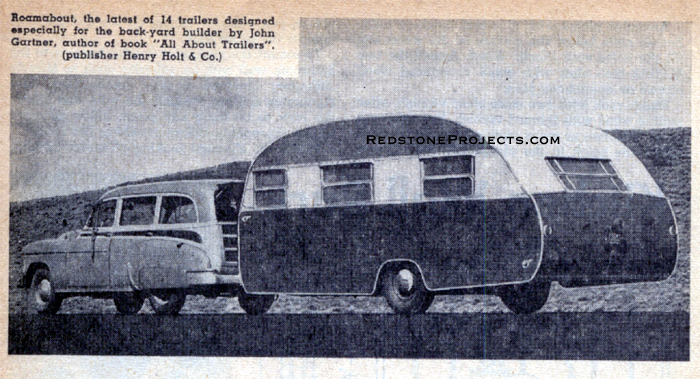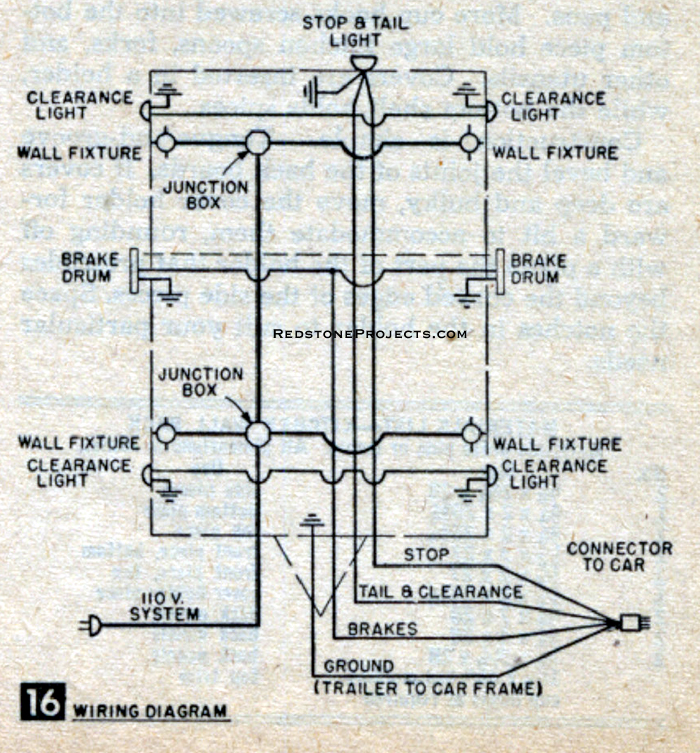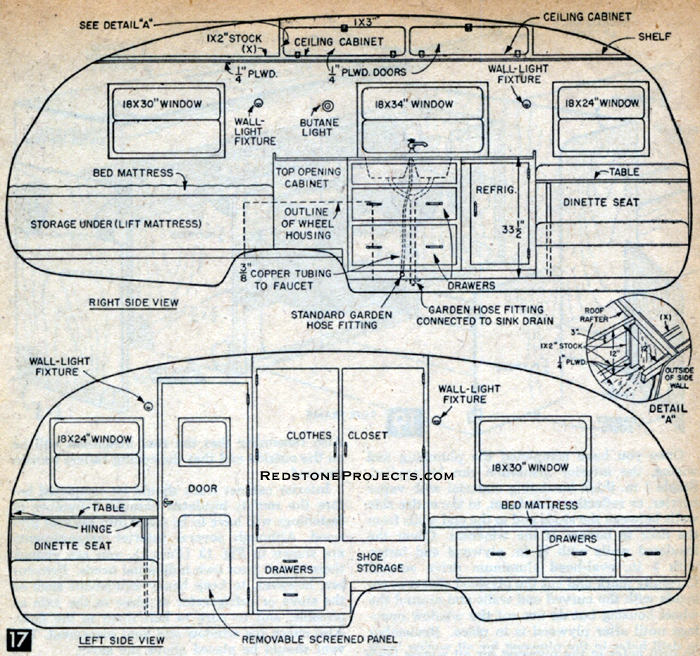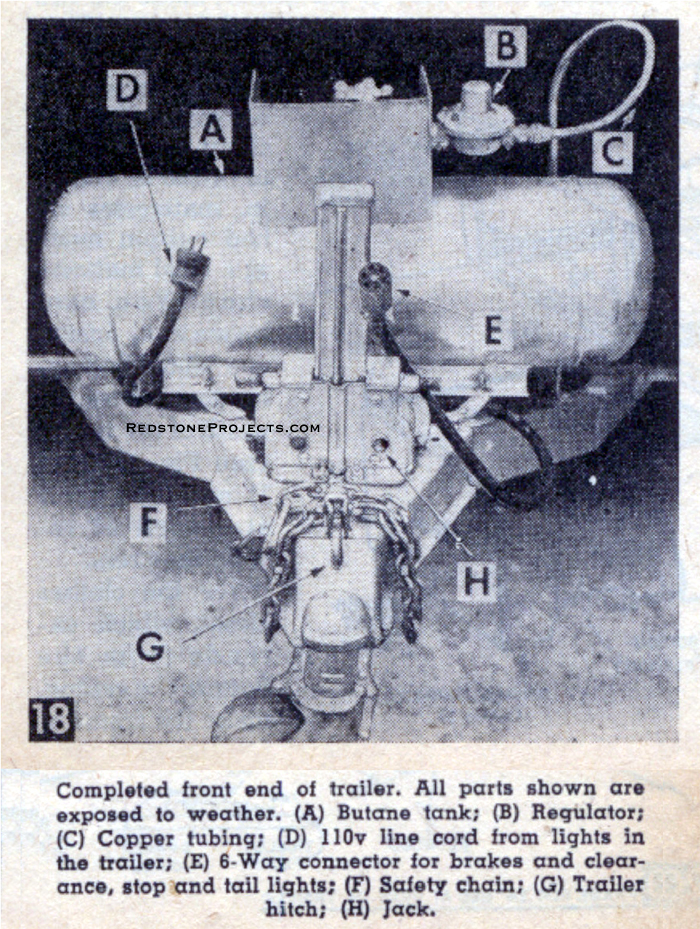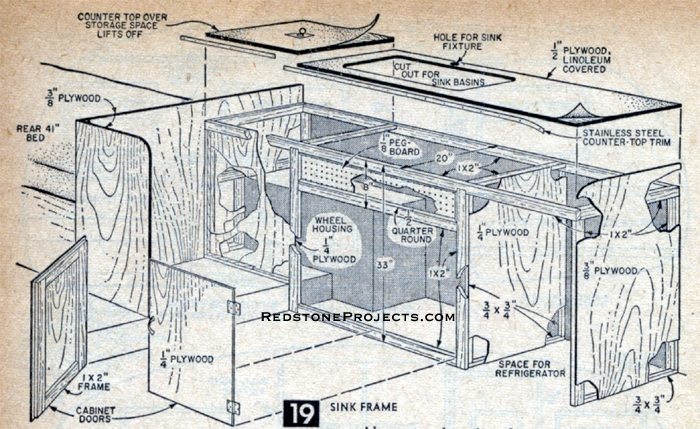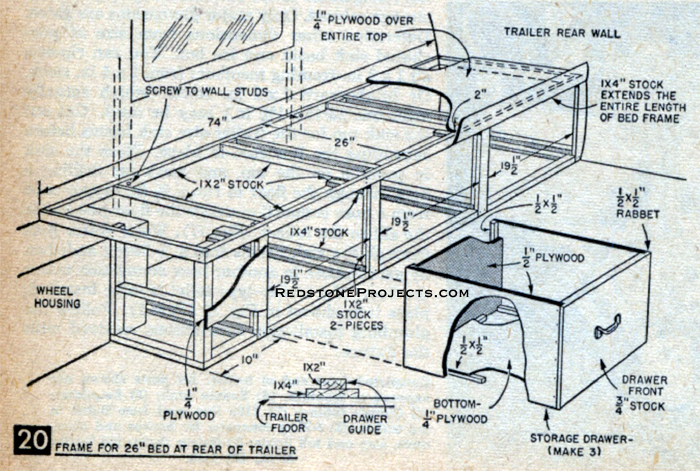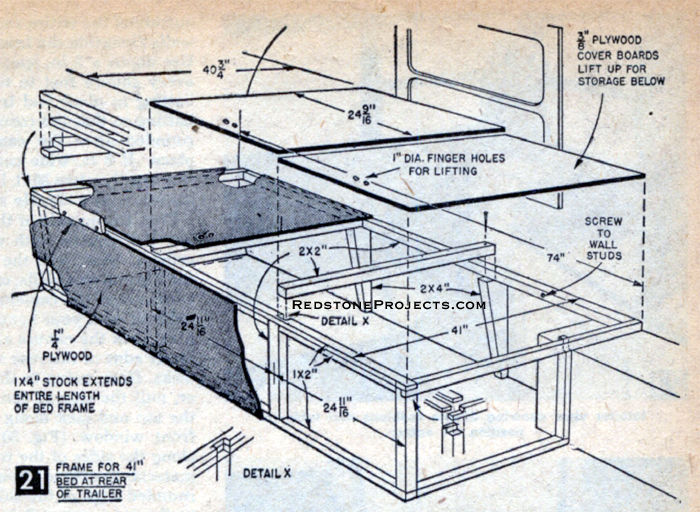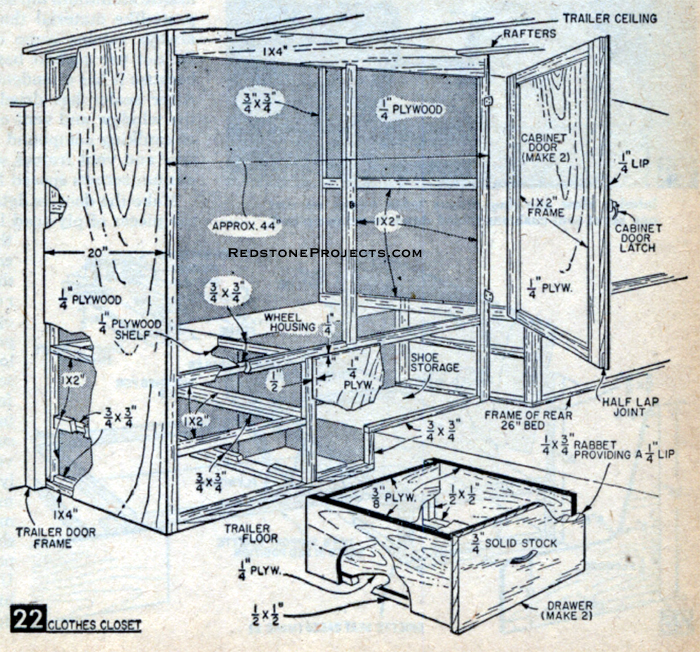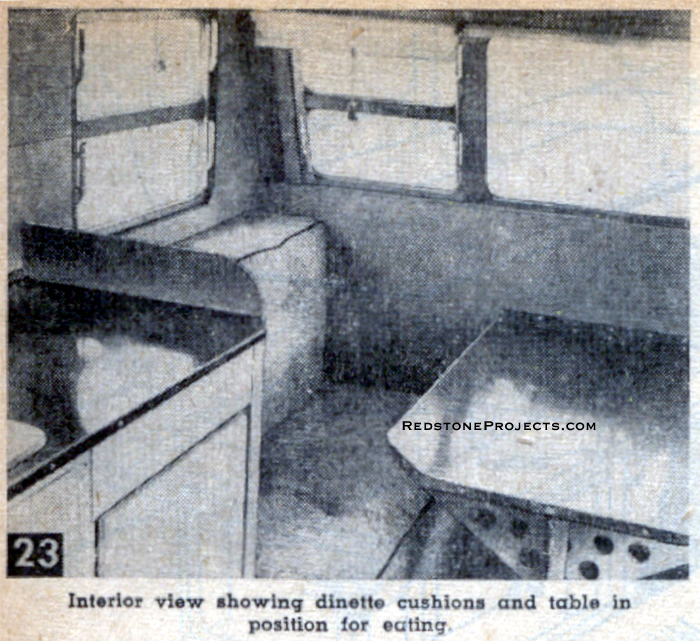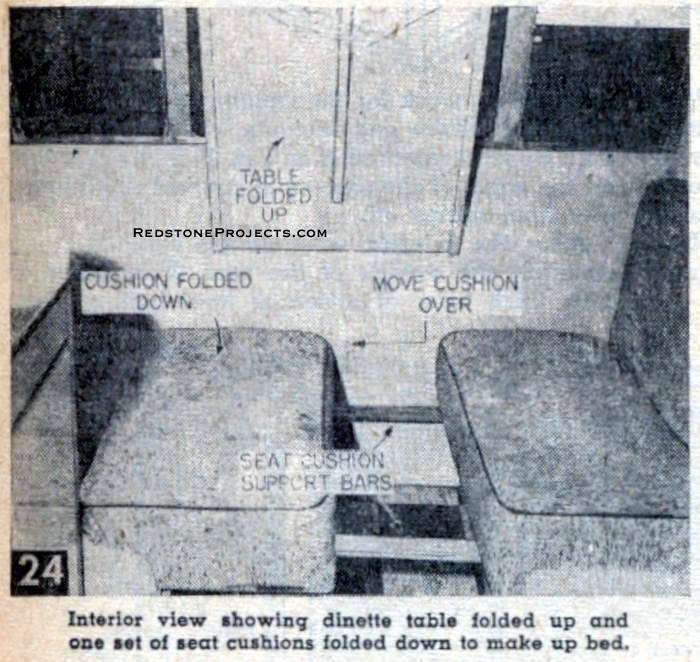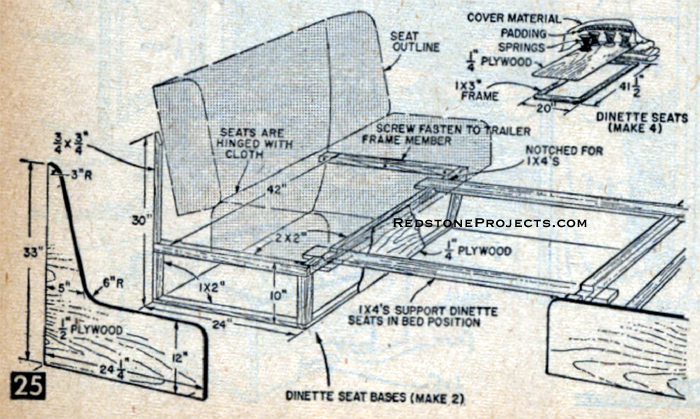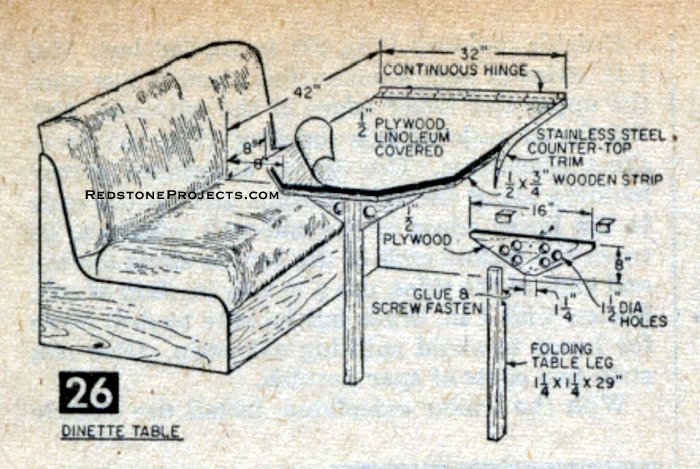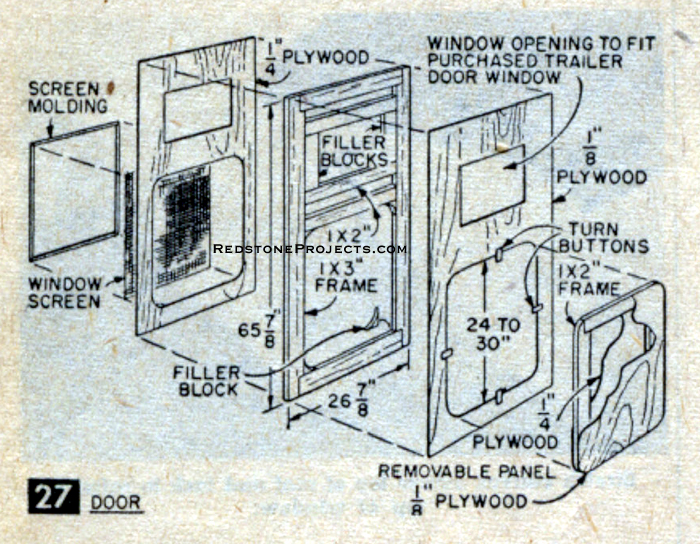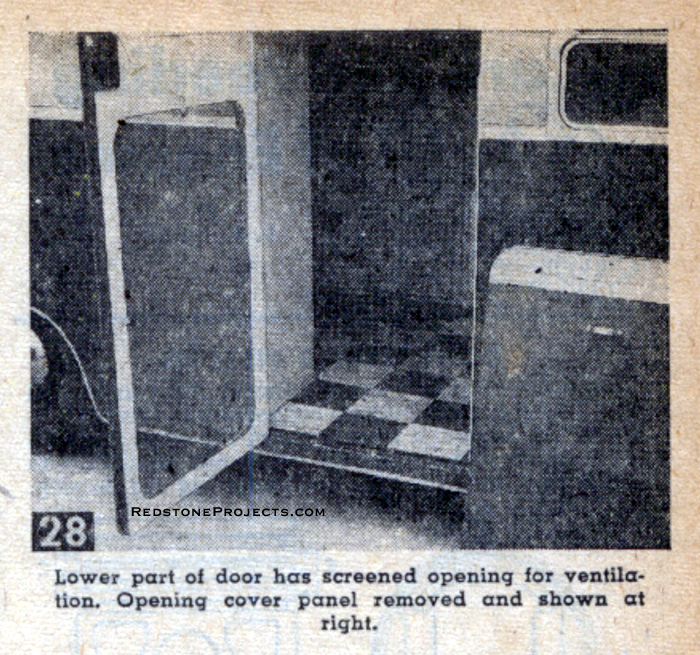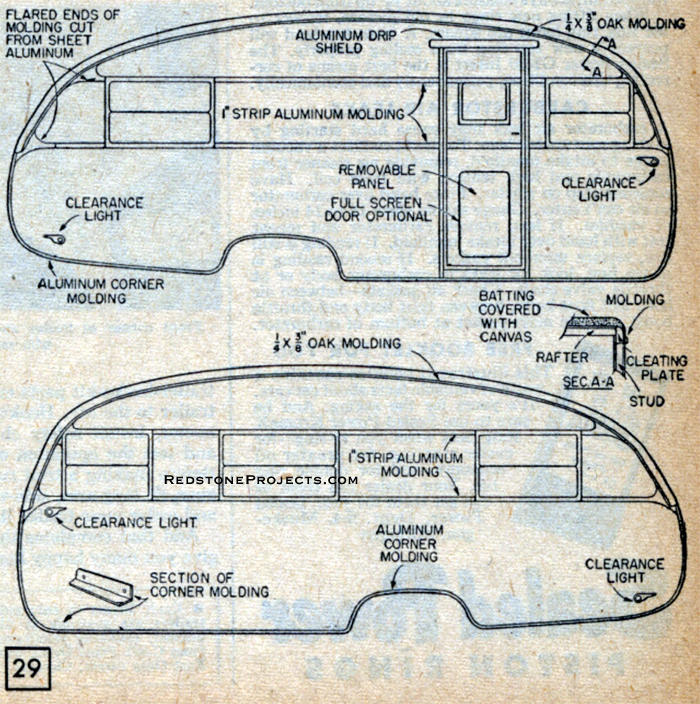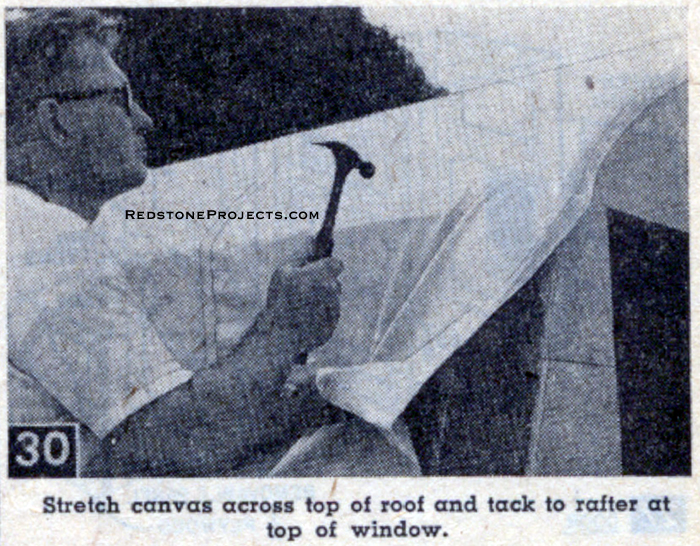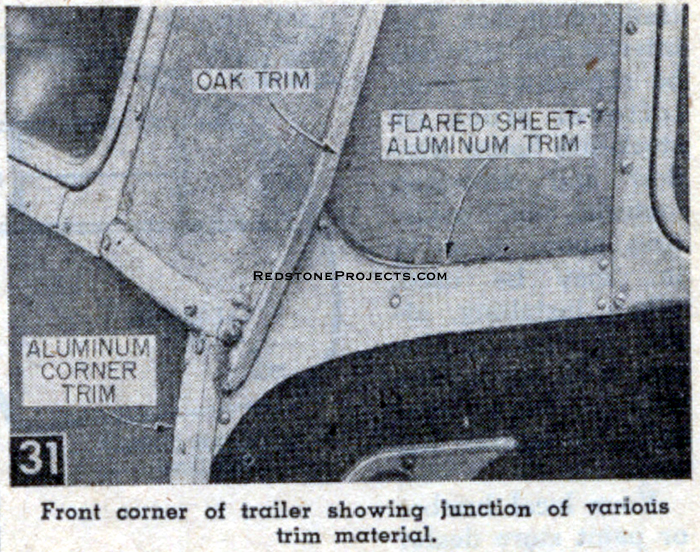 |
|||||||||||||||||||||||||||||||||||||||||||||||||||||||||||||||||||||||||||||
|
All Orders Processed on a Secure Server Build The Roamabout 18 Foot Family Vacation Trailer Although 18 feet is considered the most practical vacation trailer size for the average family, plans for building this canned ham trailer in 14 and 16 foot lengths are included.
An 18 foot Family Vacation Trailer By John Gartner PART 1 You'll save money in two ways by building your own vacation trailer. First, because you can build it yourself for one half the cost of a comparably built and equipped new factory trailer. Second, because the two largest vacation expenses, lodging and meals, for you and your family will not be much more than if you stayed at home. The plus feature of having a vacation trailer is that even summer week ends can become short trip, fun packed vacation days. You'll find real comfort in Roamabout too, because it provides sleeping, cooking and eating
Repeated checks in towing with Chevrolet station wagons (1950 to 1955 six cylinder models with manual shift) show a mileage average of slightly over 15 miles to the gallon of gasoline. Fully equipped but without supplies, Roamabout has a certified weight of 2160 lbs. Actual weight on the road with supplies (and we carried plenty) is about 3000 lbs. Due to the step down design and use of torsion spring axle, it has an extremely low center of gravity and tows remarkably well. This step gives 6 ft. 2 in. of headroom in the work area and an overall height of 7 ft. 2 in. which permits off-season storage in many existing garages. Tires can be deflated or removed for winter storage in garages having 7 ft. high doors. Although it is difficult to make an accurate estimate of the cost of building due to the variances in prices of materials and parts, my actual cost was $900, but this included complete fabrication of the chassis at a local weld shop, six-ply truck-type tires, deluxe fittings, air foam cushions, apartment-size oven stove, vinyl floor covering, bird's eye maple hardwood lining and other special equipment. I believe Roamabout can be built for as little as $600 providing the builder does his own chassis welding and shops around for materials. Cost of building the 14 or 16 ft. models will be a little less, but not as much as one might think, since the same axle assembly, hitch-jack and interior equipment would be required. Floor plans for all three models are shown in Fig. 13.
Before beginning construction, it is extremely important that all materials and parts be on hand so that each part can be fitted in its place as the trailer is assembled. Make the chassis frame (Fig. 2) first. The distance from the underside of the hitch to the ground should be approximately 18 in. If you intend to make the 14 or 16 ft. model, shorten the length of the 3 in. channels to the front and rear of the axle as noted in Fig. 3, but use the same number of angle iron cross pieces. If you are not an experienced arc welder, have the frame made up at your local weld shop: If you do the welding yourself, cut and fit all of the channel and angle iron first, then assemble with C-clamps and tack welds before running any continuous welds around joints.
Make the wheel housings (Fig. 5) next. Since tires and wheel sizes vary and clearance above the wheel must be at least 5 in., first measure the distance from the top of the tire to the bottom edge of the channel iron frame and add 5 in. If you use the same axle assembly and tires we did, this distance will be 16 in. above the step and 22 in. below the step (Fig. 5). Measure and cut a piece of 1/4 in. waterproof plywood to size as in Fig. 6 and bolt to the channel iron with 10-32 machine screws spaced 5 in. apart. Cut the 1/4 in. plywood front and rear end pieces and bolt to angle-iron cross pieces. Coat contacting surfaces with Hunts elastic caulking compound before bolting plywood in place to make a dust tight seam. With the three pieces of plywood in position, rip 1 x 1 5/8 in. pieces from 2 x 4 in. stock for wheel housing frame members (Fig. 5). Carefully cut and fit each frame piece in place and fasten to plywood with waterproof glue and #6 x 3/4 in. f.h. screws (Fig. 7). Make the floor from four sheets 1/2 in. exterior plywood. One 4 in. and one 6 in. strip ripped from the second from the rear floor panel (Fig. 8) will provide the vertical piece needed at the step and the batten that is glued and screwed to the underside of the rear and next to the rear floor panels to join them (Fig. 3). With a portable electric saw cut a 3/16 x 2 in. rabbet on the undersides of the front and rear floor panels to clear the angle iron cross pieces. Bolt the floor to the chassis frame with 1/4 x 1 1/4 f.h. machine screws, countersunk and spaced about 1 ft. apart. Use #8 x 11/2 f.h. screws along the wooden stringers. Make sure floor fits tightly against angle irons where stringer bolt heads protrude by chiseling a clearance hole on underside of floor panels. Do not fit shaped wooden sills to front and rear of floor until side walls are erected.
Your next step is the construction of the two side walls. Lay four sheets of 4 x 8 ft. exterior plywood 1/4 in. thick on the garage floor to form a large rectangle 8 x 16 ft. Measure and draw 1 ft. squares over the entire area and lightly sketch in the wall outline as in Fig. 9. A 1/2 x 1/2 in. strip of wood to bend and scribe against will aid you in drawing a smooth curve. If you care to increase the head room in the trailer, layout the roof line higher than shown. Dotted lines indicate outlines for 14 and 16 ft. models. Because all trailer window frames are flat, be sure to make the outline perfectly straight where the windows in the front and rear ends will be located. Locate and cut the three 1 x 1 5/8 in. studs (marked X in Fig. 9) 2 in. longer than the plans call for at their lower ends. The center stud straddles the vertical plywood seam. With the studs held in their exact position, drill small guide holes for nails through the studs and plywood at each end of the studs and the center where the four sheets join. Now, turn the entire large 8 x 16 ft. rectangle over so that the studs are on bottom. Separate the front and rear panels at the center and coat the center stud with waterproof glue.
If you are using the same size windows we used, measure and layout the side wall for the window and door openings, and the rest of the 1 x 1 5/8 in. studding as in Fig. 9. Cut and fit all the vertical and horizontal studs. To locate the exact position of where to drive the screws through the 1/4 in. plywood into the studs from the outside, drill 1/16 in. holes through the plywood at the center and ends of each stud. Then, when the side wall is turned over later, connect the 1/16 in. holes with a pencil line which will indicate the location of the center of the studs. Coat the studs with waterproof glue and fasten with two 11/4 in. nails in each stud to hold them in place while you turn the side over. Have the studs resting directly on the concrete floor and fasten the plywood to the studs with 1 in. oval head aluminum drive screws spaced 2 in. apart where studs join and 6 in. apart at other places. Now, again turn the side over and fasten studs where they
join with metal corrugated fasteners. Prop the side up above the floor
and saw out the window openings flush with the studding. To keep the side
rigid for future handling, do not cut out the door opening until later.
Saw out the door opening and save the pieces to make the door. Cut 18 rafters 6 ft. 11 1/2 in. long and fit into the notches cut in the curved studs as in Fig. 12. Fasten with glue and two #8 x 1 3/4 in. f.h. screws at each end (Fig. 14). Make the front and rear end sills (Fig. 3) from 2 x 2 in. stock. Bevel to conform with curve of sides and bolt to front and rear angle iron cross pieces. Mark the width dimensions of the front and rear windows on the rafters at each end so that the windows will be centered, and fasten two pieces of stud stock vertically between the roof rafters. Make a similar frame for the roof vent above the spot where the cooking stove will be located. With all the frame pieces in place, bevel the edges of the rafters so that the plywood ceiling and ends will fit snugly. Use 1/4 in. exterior plywood for the roof and end walls. Cut the plywood pieces slightly over 7 ft. long and trim ends after installation. If you have trouble bending the rear panel, wrap it in a blanket and soak with hot water until pliable. Use #6 x 1 in. f.h. screws spaced 2 in. apart at the end sills and where the panels are joined, and 6 in. apart elsewhere. Use 4d (1 in.) cement coated nails to fasten the roof plywood to the curved studs. Place the nails about 3/4 in. from the edge to allow for rounding off corner with a plane or draw knife as in Fig. 15. Sand rounded corner with a disc sander to make it smooth and uniform. Leave the corners below lower window line square because they are later covered with aluminum corner molding. Electrical wiring, insulating and completing the exterior and interior of Roamabout to get it ready for that vacation will be described in Part 2 appearing in the next issue.
An 18 foot Family Vacation Trailer By John Gartner PART 2 With the roof and end-wall panels in place, and the corners rounded off as described in Part 1, installation of the electrical wiring is your next step. Brake, stop, tail and clearance lights are wired to a common connector at the tongue under the trailer (Fig. 16). Run the wires, which are plastic covered to avoid deterioration, under the trailer and up through holes drilled through the floor and sills. Fasten the stop, tail and clearance lights to the walls and connect to wires extending through holes drilled through the walls in back of light fittings. Staple the wires to the trailer underside and wall studs with insulated staples. For the 110-volt interior lighting circuit, use #12 two-wire Romex cable again run under the trailer and up the side walls through holes drilled through the floor and walls sills. Carry the cables up to about 6 in. above the tops of the windows for connecting to wall light fixtures later (Fig. 17) when interior wall covering is applied. Use standard junction boxes fastened to the underside of the trailer floor where branch lines join. Connect the outside end of the cable to a standard male connector for hookup with an extension cord to power supply. If an electric refrigerator is to be installed, provide an additional branch line to a convenience outlet located in the trailer wall near the refrigerator.
Waste water goes through the sink drains into a Y-fitting and then by garden hose to another hose connection under the floor. If a trailer-type toilet is to be installed, place it as shown in Fig. 13 (Part 1). Follow the plumbing installation instructions received with the fixture.
Cover the insulated walls with 1/8 in. plywood and fasten with 1 in. oval-head aluminum drive screws. Carefully mark and cut the plywood sheets to coincide with the curved end walls and around the wheel housing but do not cut the window openings until after plywood is in place. Remember to drill holes in the plywood for all wiring leads and the butane light tubing if it is to be included. Also remember that the roof insulation will be on the outside and that the ceiling rafters remain exposed. Interior cabinet work should be completed before the roof is insulated because a number of fastenings will have to be made into the roof plywood. Although several interior arrangements are shown in Fig. 13 (Part 1), you can change these to suit your own individual needs. Remember, however, to keep heavy equipment such as the stove or refrigerator as close to the axle as possible, and be sure to bolt them to the floor. Also check the window and vent placement. The vent should be placed above the stove.
For the clothes closet, which extends from the floor to the ceiling, make the frame of 1 x 2 in. and 3/4 x 3/4 in. stock (Fig. 22). Fasten the 1 x 4 in. top framing member to the 1/4 in. roof plywood with screws driven through from the outside. Fasten the vertical frame pieces against the wall to the horizontal wall studs and the bottom frame pieces to the floor. Cover the two closet ends and front of the shoe storage compartment with 1/4 in. plywood and install the 1/4 in. plywood shelf. Take the dimensions for the 1 x 2 in. cabinet door frame directly from the door openings so the frames will fit inside the openings when the doors are closed. Cover the frames with 1/4 in. plywood, allowing it to extend 1/4 in. beyond the frames all around. Hang the doors with standard kitchen cabinet hinges and door latches. Determine the drawer size from the closet frame and assemble as is detailed in Fig. 22. The dinette seat and table arrangement, which is used for eating during the day (Fig. 23), converts to a bed at night (Fig. 24) . Make up four seat frames (Fig. 25) and have your local upholstery shop make the cushions hinging two together as in Figs. 24 and 25. To support the seats, install a seat base into each forward corner of the trailer (Fig. 25). Make the dinette table as in Fig. 26 and fasten to the front trailer wall with a continuous hinge so that the table can be raised and lowered. For the ceiling cabinet and shelves (Fig. 17) use 1 x 2 in. stock for the framing and 1/4 in. plywood for shelves and cabinets.
When completely tacked, cut out canvas around windows and vents, leaving about 1 in. of canvas to wrap and tack around openings. Before fitting windows and vent in place, give the canvas top two coats of oil-base mastic aluminum top sealer. This is a heavy, paste-like material that is waterproof and always retains some degree of elasticity. Do not use asphalt base aluminum mastic because it has a tendency to rot the canvas. After sealer has dried, coat the edges of the window and vent openings with plenty of caulking compound and fasten the window and vent frames with #8 x 3/4 r.h. aluminum screws spaced 3 to 4 in. apart. Make the door as detailed in Fig. 27. Use the pieces of plywood left after cutting out the door opening as covering material on the door frame. The removable panel is optional. You may prefer to make the lower part of the door solid. However, we found that by removing the panel on hot summer nights the ventilation was greatly improved which made sleeping much more comfortable. As shown in Fig. 28 the panel area is screened. Use a continuous hinge to hang the door and fit with a trailer door lock.
|
